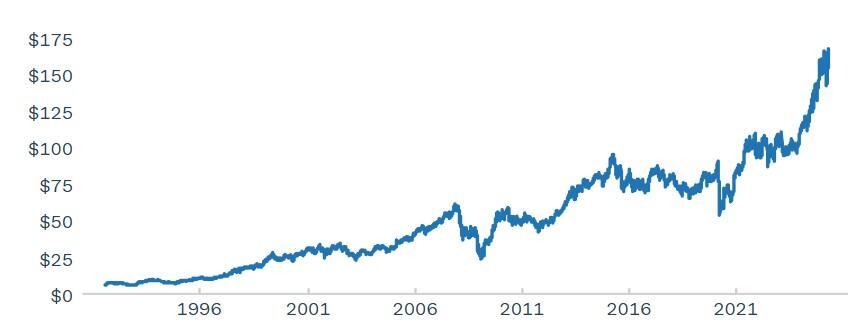For those old enough to remember, Commonwealth Bank of Australia (CBA) used the slogan ‘Which bank’ more than 20 years ago as it powered its way to the largest share of Australia’s banking market.
The question many market watchers may have posed yesterday was: “Why did a bank that was considered overvalued by the majority of analysts surge to a record high?”
CBA (ASX: CBA) already held the mantle as one of the world’s most expensive publicly-listed banks before the shares jumped more than 4% to $168.70 on Tuesday, capitalising Australia’s largest bank at about A$279 billion (US$178.6 billion).
This also entrenched its position as the biggest listed company on the Australian Securities Exchange (ASX), one that was gradually privatised between 1991 and 1996 after 80 years of state ownership.
Why the shares did what they did remains a mystery although many are postulating theories including that the banks is a safe haven at a time of global turmoil and/or a beneficiary of passive index-hugging investing.
Global share markets have been volatile since United States President launched his war with trading partners on 2 April, plunging on the news and bouncing around in response to retaliatory action by targets and concessions by Trump.
Theories abound
The Australian Financial Review’s Chanticleer columnist wrote CBA’s rally had been attributed variously to buying from a large US investor which had been selling US stocks, Asian investors wanting large, liquid stocks not affected by tariffs, a perception as a safe haven investment, and investing by super funds which cannot afford to lag benchmarks during performance tests.
“My gut feel that it’s a flight to safety,” said one analyst.
“People think CBA is a safe investment, irrespective of the price.”
Another factor was the continuing consolidation of superannuation funds with mergers bringing the management of externally-managed portfolios in-house to fund managers who preferred to buy CBA shares to achieve index weightings, he said.
“I wouldn’t call it ‘blind buying’ but certainly it’s buying that doesn’t take into account value,” the analyst said.
“It may be interesting to external people but when you’re an analyst, it’s absolutely tear-your-hair-out stuff because the fundamental value of CBA did not move 4%.”
According to Yahoo Finance analysis, three of the 12 analysts covering CBA had a ‘sell’ recommendation on the stock with the other nine rating it an ‘underperform’.
The average price target was $111.98, meaning they saw it as 49% over-valued at the price at the time of writing of $167.25.

CommSec advised investors to be cautious because although CBA's 200-day moving share price average was trending upwards, the 20-day moving average was falling as upwards momentum waned.
In a note on 12 February, Morgans maintained its ‘reduce’ recommendation for CBA with a 12 month share price target of $102, saying the share price of $165.98 put the stock on an ‘eye watering’ multiple of 27 times forecast 2025 earnings.
Analyst Nathan Lead said CBA had highest return on equity, lowest cost of capital, largest residential mortgage position and largest low cost deposit base in Australia, along with leading technology, and a loyal retail investor and customer base.
“However, we believe potential medium-term returns are too compressed at current prices considering CBA’s earnings and dividend outlook and elevated trading multiples,” Lead said in the note.
CBA shares could tumble, according to analysts' price estimates compiled by S&P Global Market Intelligence.
The downside was 23% at the time Market Intelligence published an article, which was when the price was $145.60.
At the current price the fall to the price estimates would be about 33%.



